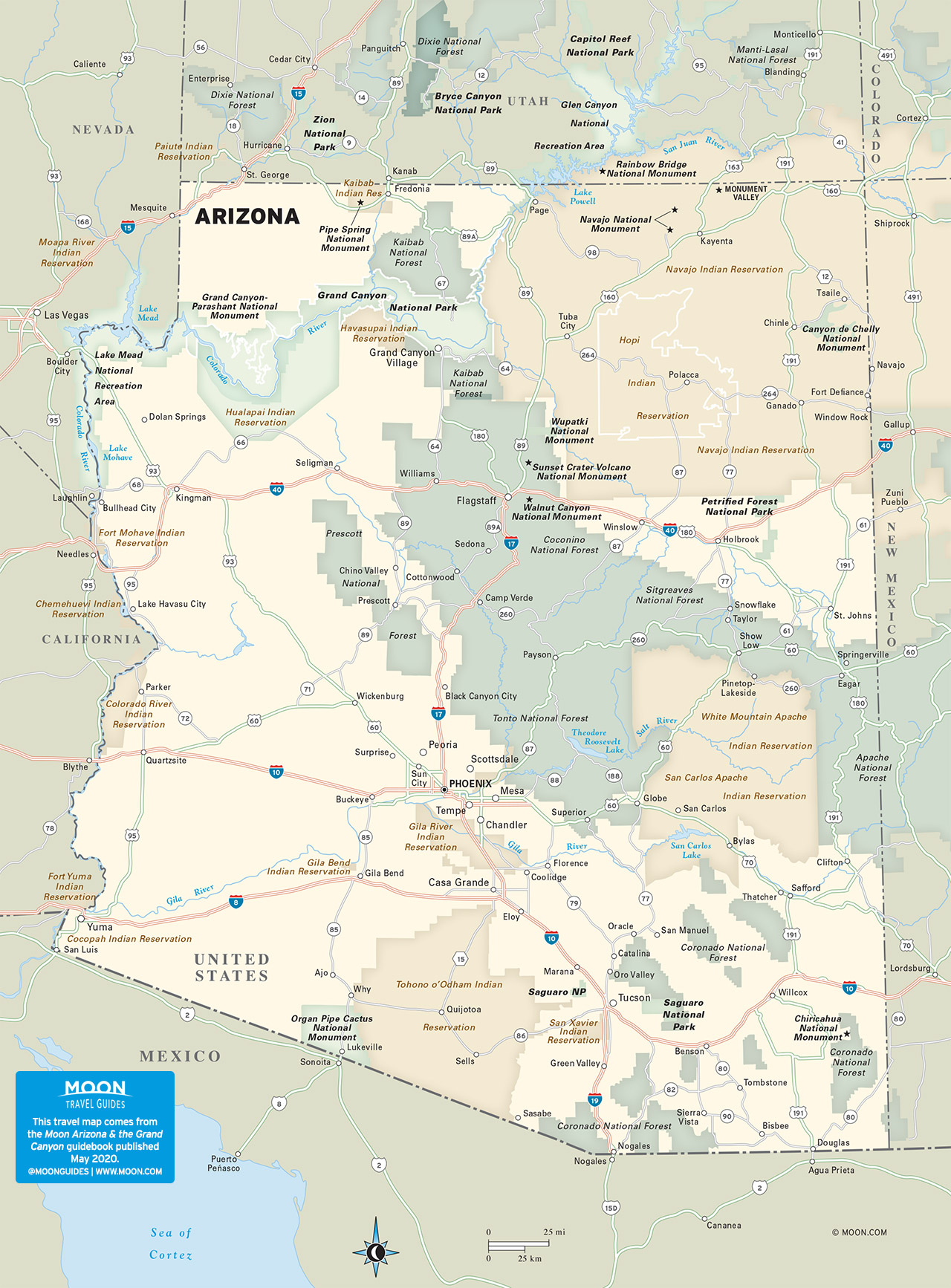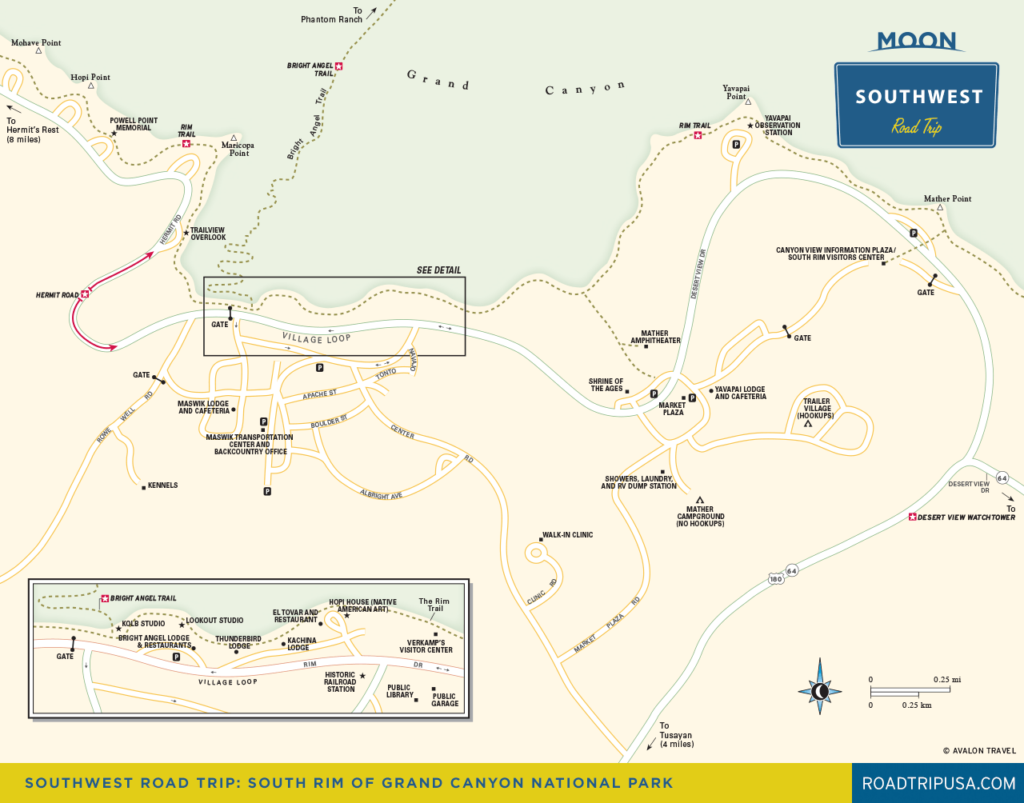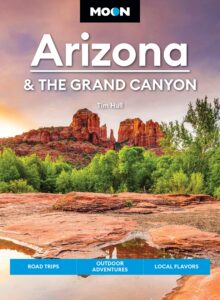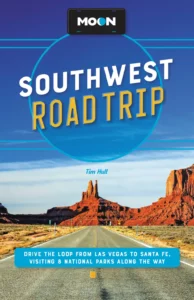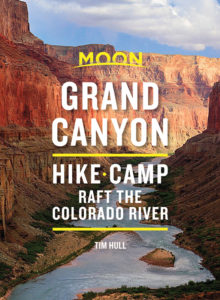Detour: Grand Canyon National Park
Route 66 Detour: Grand Canyon
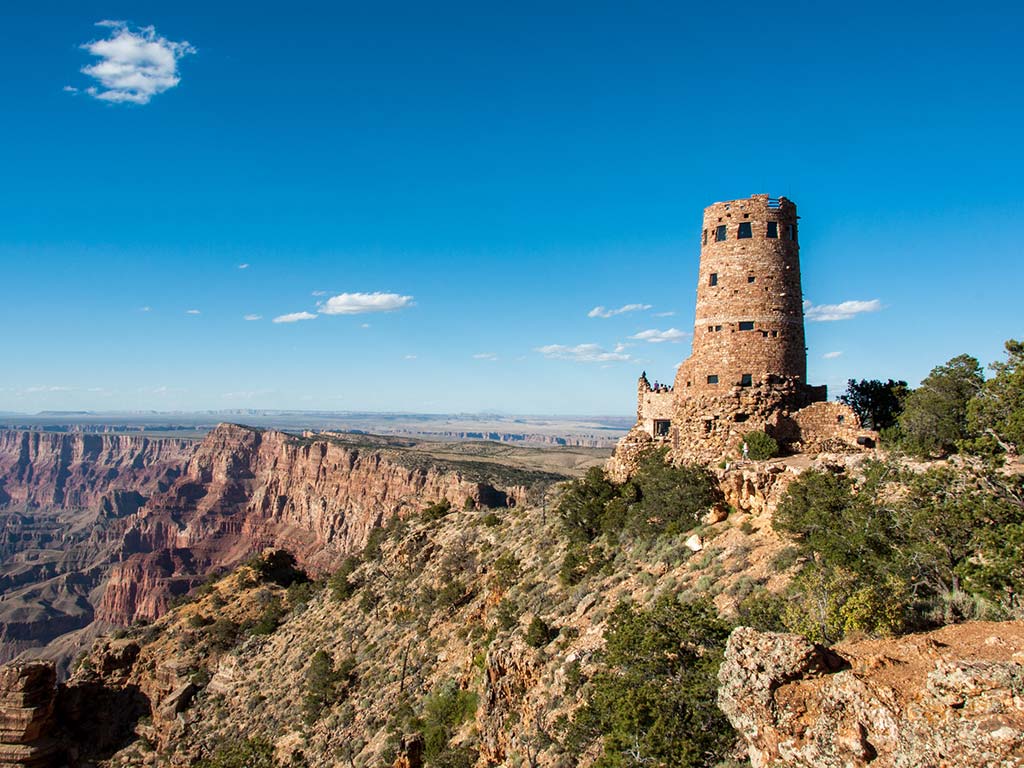
One of the wonders of the natural world, the Grand Canyon of the Colorado River—277 miles (455 km) long, more than a mile (1.6 km) deep, and anywhere from 5 to 18 mi (8 to 29 km) across—defies description, and if you’re anywhere nearby, you owe it to yourself to stop for a look. The most amazing thing about the Grand Canyon, apart from its sheer size and incredible variety of shapes and colors, is how different it looks when viewed from different places (artist David Hockney has said that the Grand Canyon is the only place on Earth that makes you want to look in all directions—up, down, and side to side—at the same time). Be sure to check it out from as many angles, and at as many different times of day, as you can. A book like this one can do little more than hint at all there is to see and do, but if you have time for nothing else, take a quick hike down into the canyon to get a real sense of its truly awesome scale.
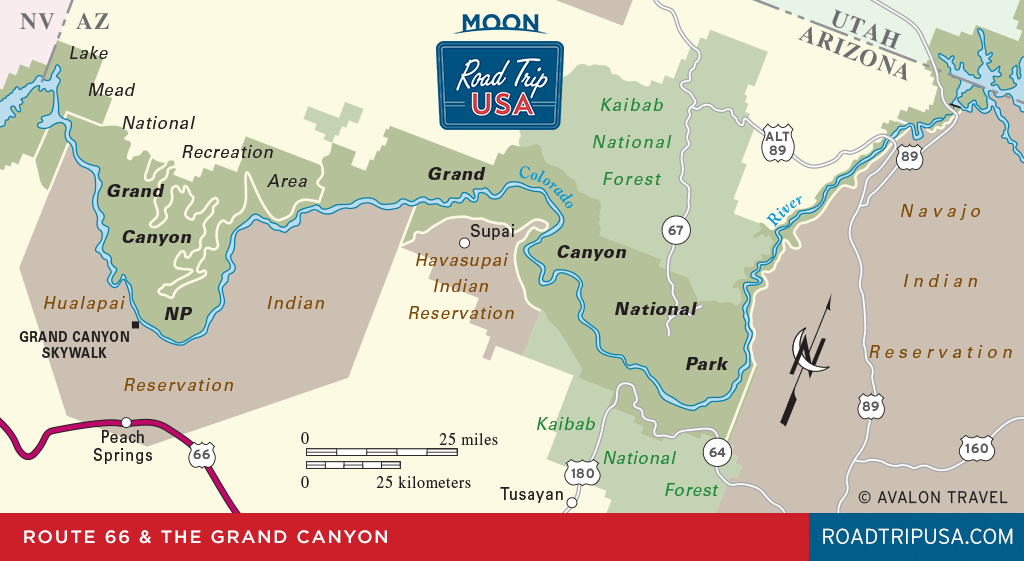
The great majority of the five million people who visit the Grand Canyon each year arrive at the South Rim and gaze down into the Grand Canyon from Mather Point, where the entrance road hits the edge of the gorge. The park visitors center and most of the food and lodging are located 2 mi (3.2 km) west at Grand Canyon Village. Beyond Grand Canyon Village, West Rim Drive winds west, leading past the J. W. Powell Memorial at Hopi Point, from where you get great views of the Colorado River, which otherwise can be surprisingly hard to see. A series of other viewpoints dot the drive before ending up at Hermit’s Rest, 7 mi (11.3 km) from Grand Canyon Village, where there are yet more stupendous views as well as restrooms, drinking fountains, and a gift shop.
The West Rim Drive, which was built for tourists by the Santa Fe Railroad in 1912, is closed to cars throughout summer, but frequent shuttle buses stop at all the viewpoints. A 6-mi (9.6-km) hiking trail runs west from the Powell Memorial to Hermit’s Rest, and a 2-mi (3.2-km) paved nature trail links the Powell Memorial with Grand Canyon Village.
East from Mather Point, East Rim Drive is accessible by car for 25 mi (40 km), stopping first at aptly named Grandview Point, 12 mi (19.3 km) from Grand Canyon Village and a half-mile (0.8 km) north of the East Rim Drive. This is, literally and figuratively, a high point of any Grand Canyon tour, giving a 270-degree panorama over the entire gorge. Continuing east, the road passes a small prehistoric pueblo at Tusayan Ruins before ending with a bang at Desert View Watchtower, an Ancestral Puebloan-style tower set right at the edge of the canyon. Though it looks ancient, the tower was created for tourists in 1932, designed by Mary Colter, also the architect of the Bright Angel Lodge and most of the wonderful old Harvey House hotels that lined Route 66 across the Southwest.
From the watchtower, the road continues along the rim through the east entrance, and then drops down to the crossroads town of Cameron and the Little Colorado River.
Grand Canyon Hikes
To get a real feel for the Grand Canyon, you have to get out of the car, get beyond the often overcrowded viewpoints that line the South Rim, and take a walk down into the depths of the canyon itself. The most popular and best-maintained path, the Bright Angel Trail, descends from the west end of Grand Canyon Village, following a route blazed by prospectors in the 1890s. It’s a 19 mi (31-km) hike down to the Colorado River and back. There are rest stops (with water) along the way; however, the park does not recommend anyone walking from rim to river in one day. A shorter day hike cuts off to Plateau Point, 1,300 ft (396 m) above the river and a 12-mi (19.3-km) round-trip from the South Rim. Camping at nearby Bright Angel Campground, which has space for more than 100 people, requires an advance permit from the park. Permit information is available at www.nps.gov/grca or by calling the main visitors center for details.
Another interesting old trail drops down from Grandview Point to Horseshoe Mesa, where you can still see the remnants of an old copper mine that closed in 1907. This is a 6-mi (9.6-km) round-trip and gives an unforgettable introduction to the Grand Canyon.
No matter where you go, when hiking down into the canyon, remember that it will take you twice as long to hike back up again, that the rim can be covered in snow and ice as late as June, and you must always carry water—especially in summer—at least a quart for every hour you’re on the trail. The good visitors center (928/638-7888) in Grand Canyon Village has information about the park’s many hiking trails, the canyon’s geology, the burro rides that take you down and back up again, and anything else to do with the Grand Canyon.
Grand Canyon Accommodations
It may give a sense of the immensity of the Grand Canyon to know that, while the North Rim is a mere 6-10 mi (9.6 to 16.1 km) from the South Rim as the crow flies, to get there by road requires a drive of at least 215 mi (345 km).
Most of what you’ll need to know to enjoy your Grand Canyon visit is contained in the brochure you’re given at the entrance, where you pay the $35-per-car fee (national parks passes are accepted).
To make advance reservations for accommodations—a good idea at any time of year but essential in the peak summer months phone the park concessionaire, Xanterra (888/297-2757 in advance, 928/638-2631 for same-day cancellations), which handles reservations for the six different lodges in Grand Canyon Village. The most characterful and best-value place to stay is the Bright Angel Lodge, which overlooks the canyon; the cheapest rooms share baths, while others have canyon views and fireplaces. The coffee shop here is open all day, there’s a pretty nifty soda fountain right on the edge of the canyon, and the lobby fireplace shows off the rock strata, in proper chronological order, that form the walls of the Grand Canyon. The other historic lodge is the El Tovar Hotel, opened in 1905 but recently renovated; rooms here start around $200 and top out at more than $500 a night for suites. The El Tovar also has the park’s best restaurant—and a comfy piano bar to help while away the night.
For a basic motel bed, there are four other lodges in Grand Canyon Village, offering more than 750 rooms altogether, that ($100-210). There’s also a nice lodge at the North Rim, open usually mid-May to mid-October.
It’s more of an effort to reach, but the best place to get a feel for the Grand Canyon is splendid Phantom Ranch, a rustic complex of cabins and dormitories way down in the canyon, on the north side of the Colorado River. Space here is usually taken up by people on overnight burro-ride packages (which cost around $700). But, particularly in the off-season, you may be able to get a bed without the standard six months (or more) advance reservation. Ask at the desk in the Bright Angel Lodge, or call 303/297-2757.
Reservations for camping (877/444-6777) at the South Rim are also essential in summer. The largest facility, Mather Campground (no hookups, $18), is near Market Plaza, the park’s general store and commerce area, and is open year-round, with more than 300 sites and coin-operated showers. Sites with RV hookups are available nearby at the Delaware North-run Trailer Village. There’s another National Park Service campground at Desert View, near the east entrance. Backcountry camping (overnight permits required) is available at established sites down in the canyon.
If all the in-park accommodations are full, thousands of rooms are available in Williams, Flagstaff, and right outside the park’s southern boundary at Tusayan, where you can choose from a Best Western, a Holiday Inn Express, and a Quality Inn.
Related Grand Canyon Travel Guides
Travel Map of Arizona
